5 UX hurdles VR still has to clear
7 April 2016 - Alan Blackwood
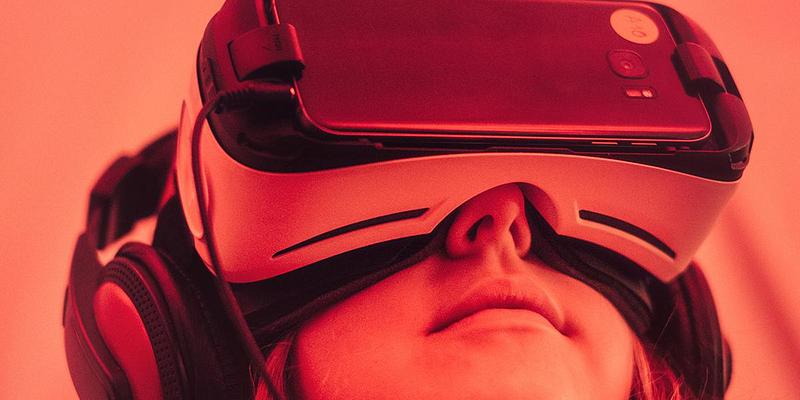
Oculus Rift and HTC Vive VR headsets will soon be sitting proudly upon the heads of legions of early adopters.
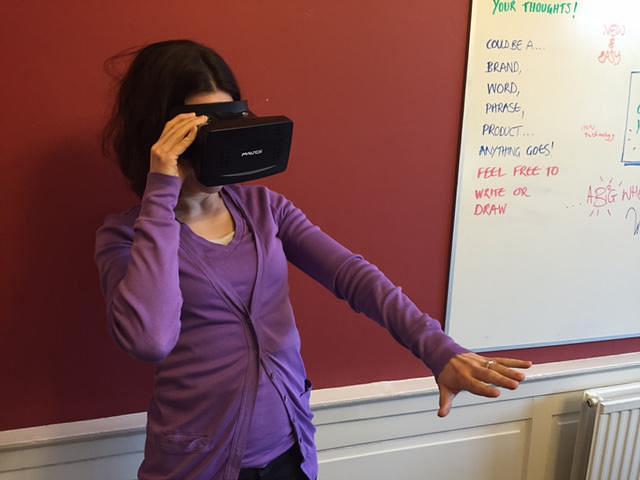
So it seems like a good time to revisit some of the insights we gained during our VR demo at the User Vision World Usability Day (WUD) event late last year and take a closer look at the UX challenges that still lie ahead for VR in 5 key areas:
- Controls
- Isolation
- Immersion
- Physical movement
- Comfort
Controls
As soon as you place a touchscreen device within a VR headset, such as Google Cardboard or Samsung’s Gear VR, touch is no longer an option as the device is sealed within the headset and reacts only to head movements, or the single action button provided on the Cardboard device for example.
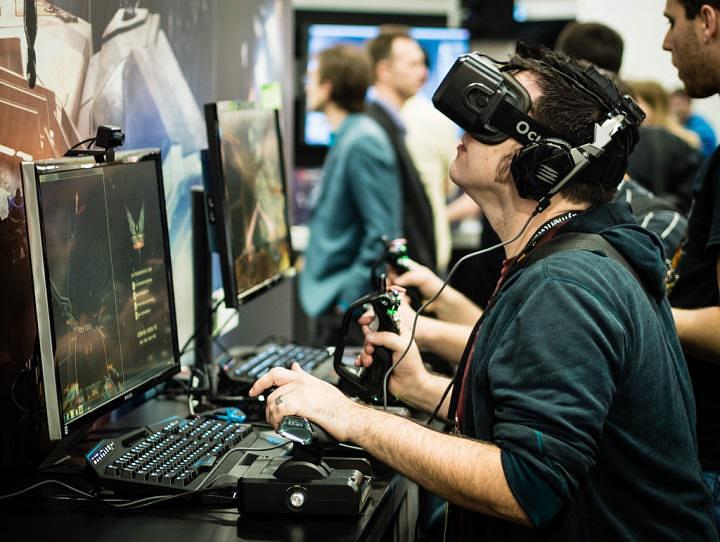
Movement in the VR version of the Crossy Road game that we used at our WUD event relied on physically orientating yourself in the direction you want to move then clicking the magnetic control button to take one step in that direction. Fine for what is effectively an updated version of the 8-bit classic ‘Frogger’ game but hardly ideal for anything requiring finer control or faster reactions.
HTC’s and Oculus’s devices rely onconnection to a PC rather thanenclosure of a mobile device. Both have promised ‘wand’ or ‘glove’ controls that will allow you to move the virtual equivalent of your hands within the VR environment but only time will tell if these prove to be an elegant or a cumbersome solution to the problem.
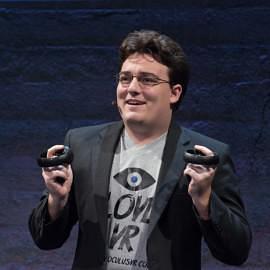
Further complication is added by the fact that you cannot see more traditional console-style controllers while you are wearing most VR headsets making button selection tricky at best.
Which brings us to the second hurdle…
Isolation
VR is not currently a great communal experience unless your co-users/viewers/players are also virtual. Once you are wearing a VR headset your visual and aural world necessarily becomes defined by the VR experience making interaction with anything, or anyone, outside the virtual environment a major challenge.
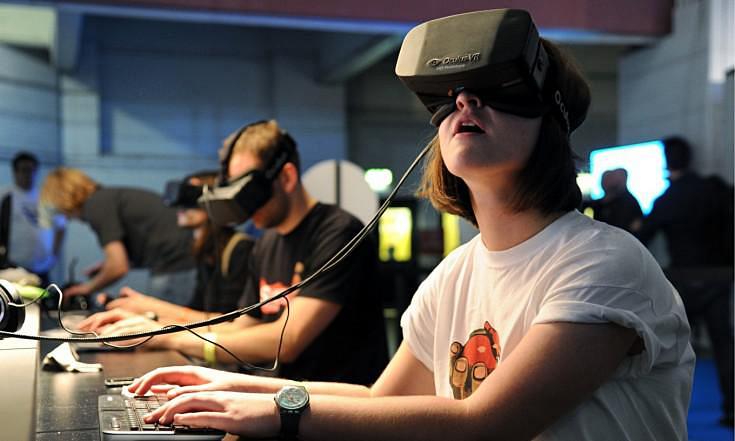
In a worrying parallel with one of the Achilles’ heels of 3D television, unless you are wearing the required hardware, you will be very much on the outside observing someone else’s seemingly random reactions (and movements if you have invested in a Cyberith Virtualizer – see video in the ‘Physical movement’ section below).
Given VR’s potential suitability for passive consumption of media such as films, this could be quite jarring – if you are visually and aurally isolated from friends in the same room watching the same movie, are you actually watching it together? Eye contact is an important element of social interaction that cannot currently exist in these virtual environments.
Avatar representations of real people within the virtual environment could go some way to addressing this issue. If these can be convincingly integrated, you could enjoy your film and virtual popcorn together with friends or family situated thousands of miles away, an extension of the kind of social ‘tele-presence’ already developing courtesy of Skype, FaceTime and other communication apps and services.
Immersion
The flipside of the disadvantages of isolation is the fundamental requirement of immersion.
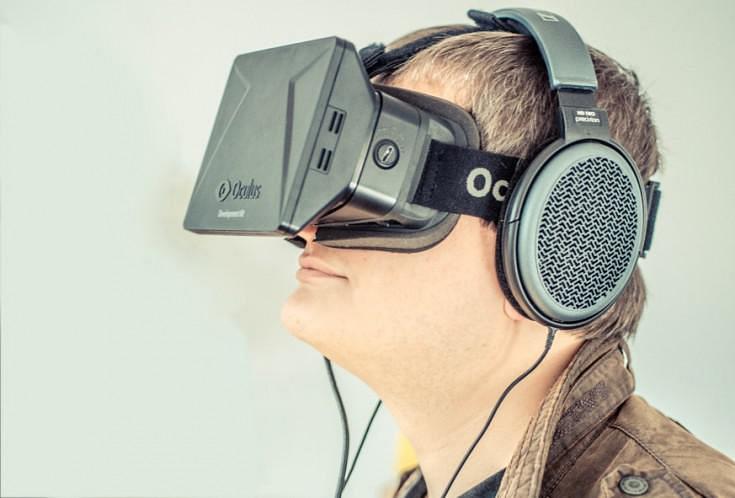
In terms of added value, this is the single most important element of Virtual Reality and the distinguishing factor between this technology and the (perhaps more adaptable) parallel technology of Augmented Reality (AR).
While you are within the VR environment, anything that reminds you of the unreality of what you are experiencing has to be removed as far as possible to maintain the ‘willing suspension of disbelief’ that you are where your eyes and ears are telling you.
As is generally the case with most technologies, the more money you spend on it the better it gets. Oculus Rift, HTC Vive and Sony’s PlayStation VR are currently at the high end of consumer-focussed VR headsets.
However, the video resolution offered by even the most expensive of this current generation of VR devices is far below a similarly-priced high-end monitor. When representing virtual environments with distant horizons, for example, this may limit how convincing objects in the distance appear to be.
Also, audio will be a crucial element of the experience. Being able to locate objects according to where they appear in the soundscape, as well as the virtual landscape, will rely on high quality audio. And with very effective noise-cancelling unless you are in a very quiet location.
Also missing from the immersion mix at the moment are the other sensations that we rely on so heavily in Real RealityTM. Sensations such as the distinct feeling of touching a particular surface, odours within the environment and ambient temperature variations will all heighten the sense of immersion, but also increase the challenge of delivering a convincing experience.
Physical movement
As became quickly obvious during our WUD demonstration, when your physical movements are the method for controlling your virtual movements, you very quickly run out of space. The spate of insurance claims for damage to televisions after Nintendo launched its Wii console is also testament to that.
This hurdle has two main contributing factors:
- Vision – Augmented Reality systems, most (in)famously Google Glass, present a virtual display layer over the real world so you can still clearly see where you are in relation to physical objects around you. As mentioned already, VR does not. Everything you see is computer-generated so if you are virtually exploring the surface of Mars in VR, there’s a good chance that your sofa might present a significant unseen obstacle to your progress.
- Tethers – Although Google’s Cardboard headset is completely wireless, Oculus Rift and HTC Vive are very much not, requiring a direct and continuous cable connection to a powerful PC as they essentially contain two small PC monitors with all of the related data bandwidth requirements. Losing track of this physical tether’s location while wandering through a virtual environment could have unpleasant, not to mention costly, consequences.
Time could solve the ‘tether’ problem to some extent once sufficiently powerful and capable computing devices become so light, small and power-efficient that they can either be integrated into the visor itself or worn by the user without either causing discomfort or limiting free movement.
However, that will not address the ‘vision’ issue. Current ‘solutions’ to this include somewhat cumbersome and awkward ‘moonwalking cradle’ devices that certainly introduce an element of aerobic exercise previously missing from most video gaming but seem very unlikely to gain widespread adoption in anything like their current form.
Judge for yourself:
HTC have an alternative approach – their Vive headset features, quote:
“…a front facing camera that allows the user to see real-world objects while they are in VR. With the mere press of a button, users can activate the “chaperone” system, which will cause any objects seen by the camera to shimmer into existence in the virtual world.
Aside from looking impressive, this feature solves one of the biggest issues with VR, allowing users to safely interact with or avoid objects in their rooms while wearing the headset.”
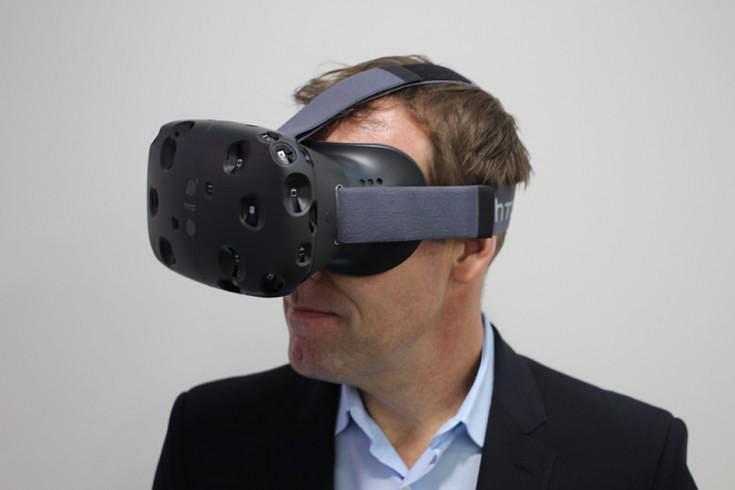
Oculus appear to be investigating something broadly similar as a future addition to the Rift.
But again we come back to VR’s USP of ‘total immersion’ which will inevitably be diluted by HTC’s approach. Their ‘chaperone’ system sounds like it will deliver something more akin to a VR/AR hybrid, which may turn out to be the best approach or may fundamentally compromise any advantage that VR has over the alternative technology.
Ultimately, it may simply be the case that flying or driving simulations are uniquely suited to VR as the vehicle travels through the virtual space but you (as the driver, pilot or passenger) can remain in a much more static position.
Comfort
Potentially one of the most fundamental challenges facing VR as an experience may not end up affecting the majority of users – ‘virtual’ motion sickness.
There have been several early reports of VR-induced queasiness after particularly acrobatic flight sim or rollercoaster experiences for example.

As the movement you are witnessing visually has no equivalent physical sensation, the resulting symptoms are similar to those experienced when motion is felt but not seen, such as being below deck on a ship in stormy seas.
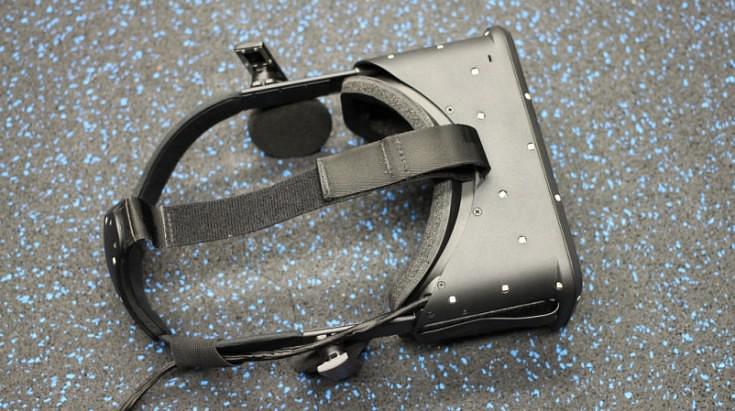
How widespread the virtual version of this issue is, and whether it will only affect those already more susceptible to ‘real-world’ motion sickness, only time will tell as more people get the chance to find out for themselves.
Again, over time this issue could be addressed. Accurately mimicking the physical movement being simulated could help but how practical or affordable such a solution would be in a consumer product is unclear. And there is already some research evidence to the contrary, suggesting that exposing people to physical movement while in a VR environment can in fact be a cause of nausea.
The physical dimensions and form of the current devices are also likely to cause issues for users in the short term. Putting the ‘tether’ issue described earlier aside, the headsets themselves are relatively cumbersome items requiring various straps to hold them in place and foam seals around the eyes to keep out ambient light.
They are also reasonably heavy which could have long-term benefits for peoples’ neck strength but is more likely to cause fatigue, particularly if the VR environment you are experiencing requires or encourages you to move your head a great deal to look around.
People who wear glasses could also find the process of attaching and removing the headset awkward, which could be good news for contact lens manufacturers if the devices do become popular.
Conclusion
None of the issues mentioned above are insurmountable and it will be fascinating to witness the creative design solutions employed as the VR experience develops over the coming years.
Oculus was famously acquired by Facebook in 2014 for $2 Billion so it is likely that we will see at least 2 or 3 versions of the Rift headset (maybe on the yearly cycle that other major hardware producers such as Apple follow) as Mark Zuckerberg and co look to realise a return on their investment.
Whatever happens, the manufacturer that manages to deliver the best user experience by clearing the greatest number of these hurdles at an affordable price is likely to have a substantial advantage.
You might also be interested in...
Bridging Business Analysis and User Experience: Achieve Outstanding Digital Results
24 November 2025Discover how aligning Business Analysis and User Experience transforms digital projects - boosting efficiency, user satisfaction, and ROI for organisations seeking exceptional results in today’s competitive market.
Read the article: Bridging Business Analysis and User Experience: Achieve Outstanding Digital ResultsMaking Hospitality Welcoming for All: A Digital Accessibility Guide for Hotels
21 November 2025Hotels have long focused on physical accessibility, but true inclusion extends online. This practical guide explains how to make your hotel website accessible for all guests—meeting global WCAG and EAA standards, expanding your reach, and creating a seamless booking experience for every visitor.
Read the article: Making Hospitality Welcoming for All: A Digital Accessibility Guide for Hotels3 perspectives on how AI is shaping inclusive digital experiences
10 November 2025AI is transforming digital accessibility — empowering disabled users, enhancing how we evaluate digital experiences, and reshaping how inclusive products are designed. This article explores three key perspectives and highlights how AI can support more equitable, human-centred digital experiences when used thoughtfully and collaboratively.
Read the article: 3 perspectives on how AI is shaping inclusive digital experiences